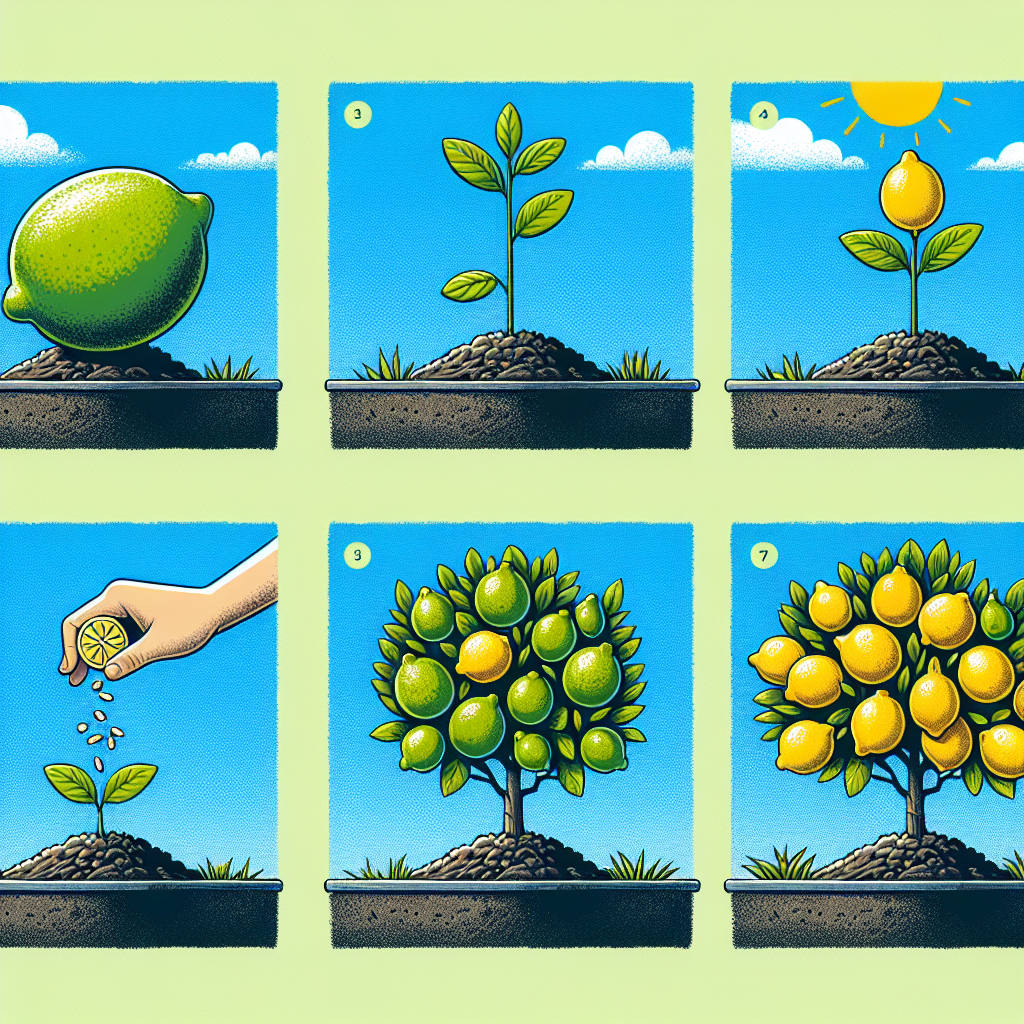
How do you grow a lemon tree
Introduction to Growing Lemon Trees
If you’ve ever tasted a freshly picked lemon, you understand the joy of homegrown produce. Lemon trees are not just beautiful additions to a garden; they also provide delicious fruit that can be used in a variety of culinary creations. Growing your own lemon tree can be a rewarding experience, allowing you to enjoy the zest and flavor of fresh lemons right from your backyard. In this article, we will cover everything you need to know about nurturing your lemon tree from seed to harvest.
Choosing the Right Type of Lemon Tree
Before diving into the cultivation process, it’s important to select the right variety of lemon tree based on your climate, space, and personal preferences. Here are some popular varieties:
- Eureka Lemon: This is one of the most common lemon varieties grown in backyards. It produces tart lemons year-round and is very hardy.
- Lisbon Lemon: Similar to Eureka, this variety is well-suited for warmer climates and also bears fruit throughout the year.
- Meyer Lemon: A hybrid between a lemon and a sweet orange, Meyer lemons are thinner-skinned and less acidic, making them a favorite for cooking and cocktails.
- Ponderosa Lemon: Known for its large fruit, Ponderosa lemons are less juicy but are often grown for their ornamental value.
Starting from Seeds or Saplings?
Deciding whether to start your lemon tree from seeds or to purchase a young sapling is crucial. Here are the pros and cons of each method:
Growing from Seeds
- Pros: Cost-effective; the experience of nurturing a plant from the very beginning.
- Cons: Takes longer to bear fruit (up to 5-7 years), and the results may not be true to the parent plant.
Planting Saplings
- Pros: Quick fruit production (1-2 years), reliable fruit quality.
- Cons: Usually more expensive than seeds; may require more careful handling during transport.
Where to Plant Your Lemon Tree
Location is key to your lemon tree's success. Here are vital considerations when choosing a planting spot:
- **Sunlight:** Lemon trees thrive in full sun, requiring at least 8-10 hours of sunlight daily.
- **Drainage:** Well-draining soil is essential. Lemon trees cannot tolerate sitting in water.
- **Space:** Ensure ample space for growth, as lemon trees can grow up to 10-20 feet high, depending on the variety.
Soil Requirements
The type of soil you use can significantly impact your lemon tree's health. Here are the optimal soil conditions:
- **pH Level:** Lemon trees prefer slightly acidic to neutral soil (pH of 5.5 to 7.0).
- **Soil Type:** Sandy loam is ideal; it allows for proper drainage while retaining some moisture.
- **Amendments:** Incorporating organic matter such as compost can enhance soil fertility and structure.
How to Care for Your Lemon Tree
Caring for your lemon tree requires consistent attention and dedication. Here are the essential care activities:
Watering
Watering is one of the most critical aspects of lemon tree care. Here are some tips:
- Water your lemon tree deeply and regularly, especially during dry periods.
- Allow the top inch of soil to dry out between waterings to prevent root rot.
- Reduce watering during the dormant winter months.
Fertilizing
Proper fertilization is crucial for growth and fruit production. Here’s how to fertilize your lemon tree:
- Use a fertilizer formulated for citrus trees, high in nitrogen.
- Apply fertilizer every 4-6 weeks during the growing season (spring and summer).
- Stop fertilizing during the fall and winter months.
Pest and Disease Management
Understanding common pests and diseases will help you ensure your lemon tree remains healthy. Here are some to watch out for:
Pests
- Scale Insects: These pests suck sap from the plant. Treat with horticultural oil.
- Aphids: Small sucking insects that can cause leaf distortion. Use insecticidal soap.
- Spider Mites: Check for webbing and leaf discoloration. Increase humidity or use miticides.
Diseases
- Root Rot: Caused by overwatering. Ensure proper drainage.
- Citrus Canker: A bacterial disease that causes lesions on leaves and fruit. Quarantine and remove affected foliage.
- Powdery Mildew: A fungal disease. Increase air circulation and consider fungicides.
Pruning Your Lemon Tree
Pruning is essential for maintaining the health and productivity of your lemon tree. Here’s a step-by-step guide:
- Perform pruning in early spring before new growth begins.
- Remove dead, damaged, or crossing branches to improve airflow.
- Thin out overcrowded areas to allow sunlight to reach the inner canopy.
Harvesting Your Lemons
The moment of satisfaction arrives when you can finally harvest your lemons. Here’s how to know when they’re ready:
- Most lemons are ready for harvest when they turn a bright yellow color.
- Check for firmness; ripe lemons should be firm to the touch.
- Harvest by cutting the fruit from the stem using pruning shears to avoid damaging the tree.
Conclusion
With the right care and attention, growing a lemon tree can be a delightful addition to any gardening endeavor. From choosing the right variety, ensuring optimal conditions, to understanding how do you grow a lemon tree successfully, you can enjoy the freshest lemons right at your home. Whether you choose to grow from seeds or saplings, the journey from planting to harvesting is worth the effort. Incorporate these tips into your gardening routine, and soon, you’ll be picking your own lemons for lemonade, cooking, or garnishing your favorite dishes. Happy gardening!
By Guest, Published on October 10th, 2024